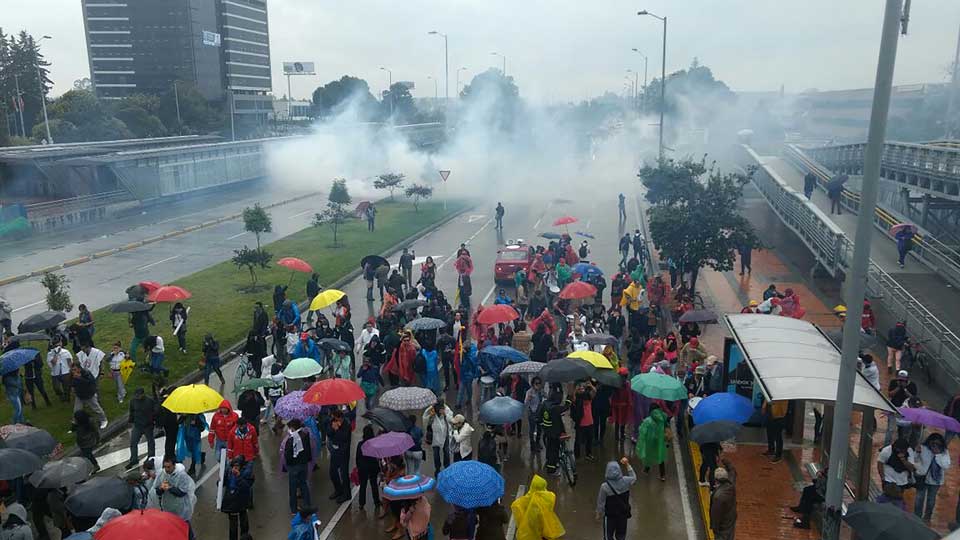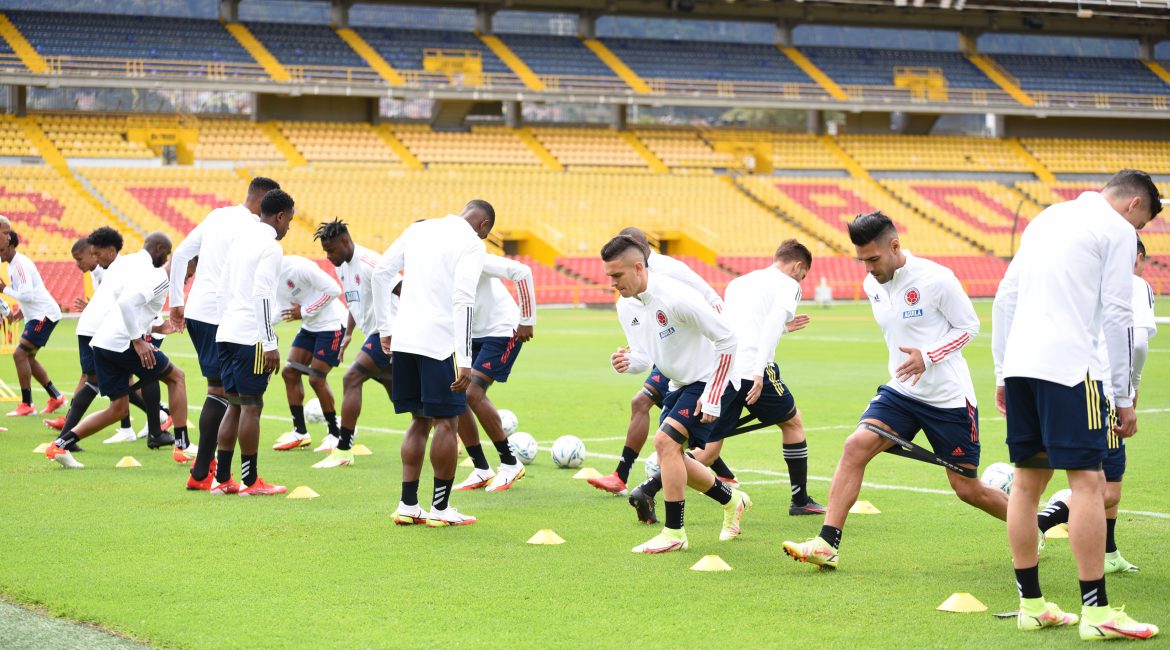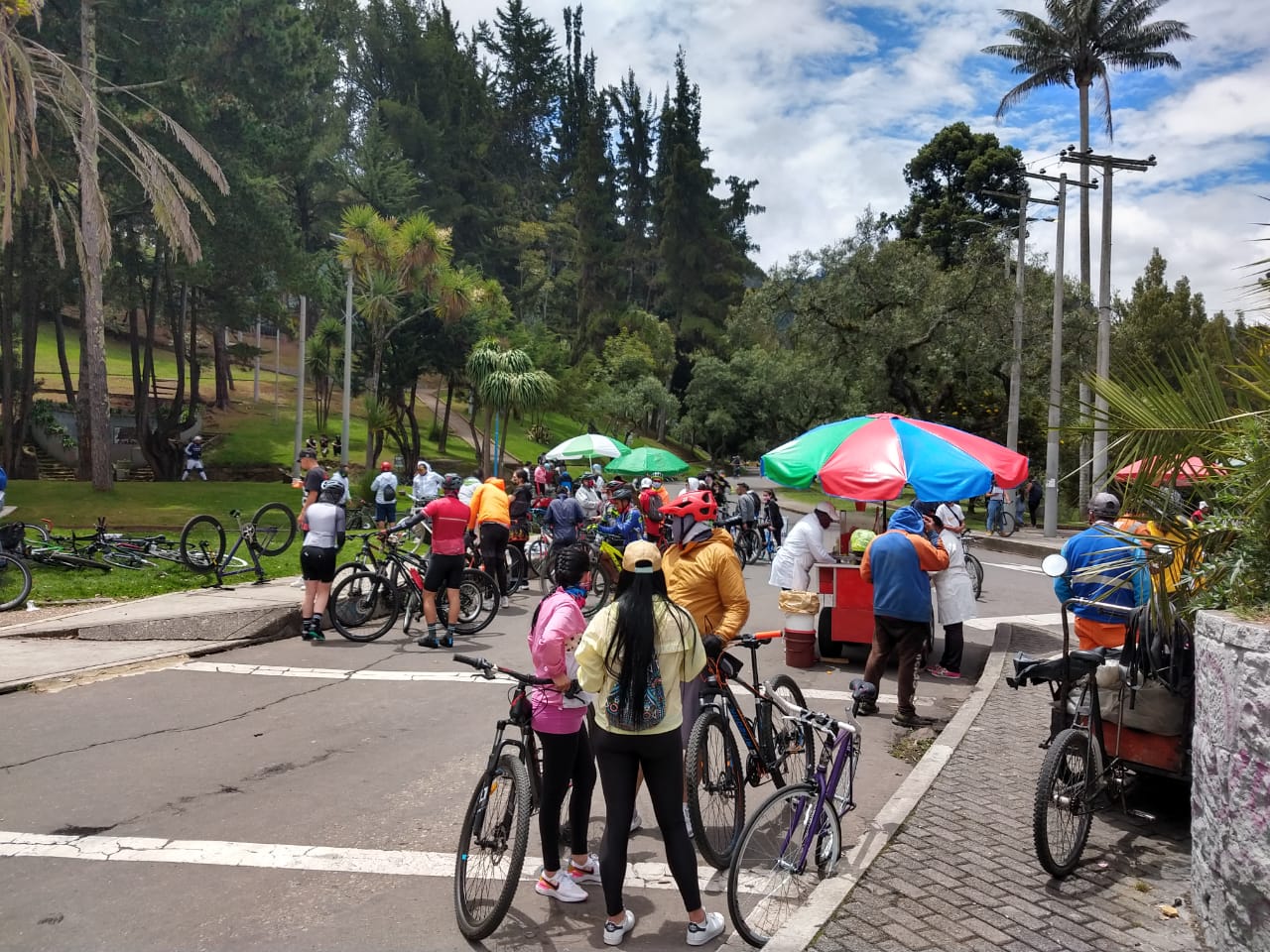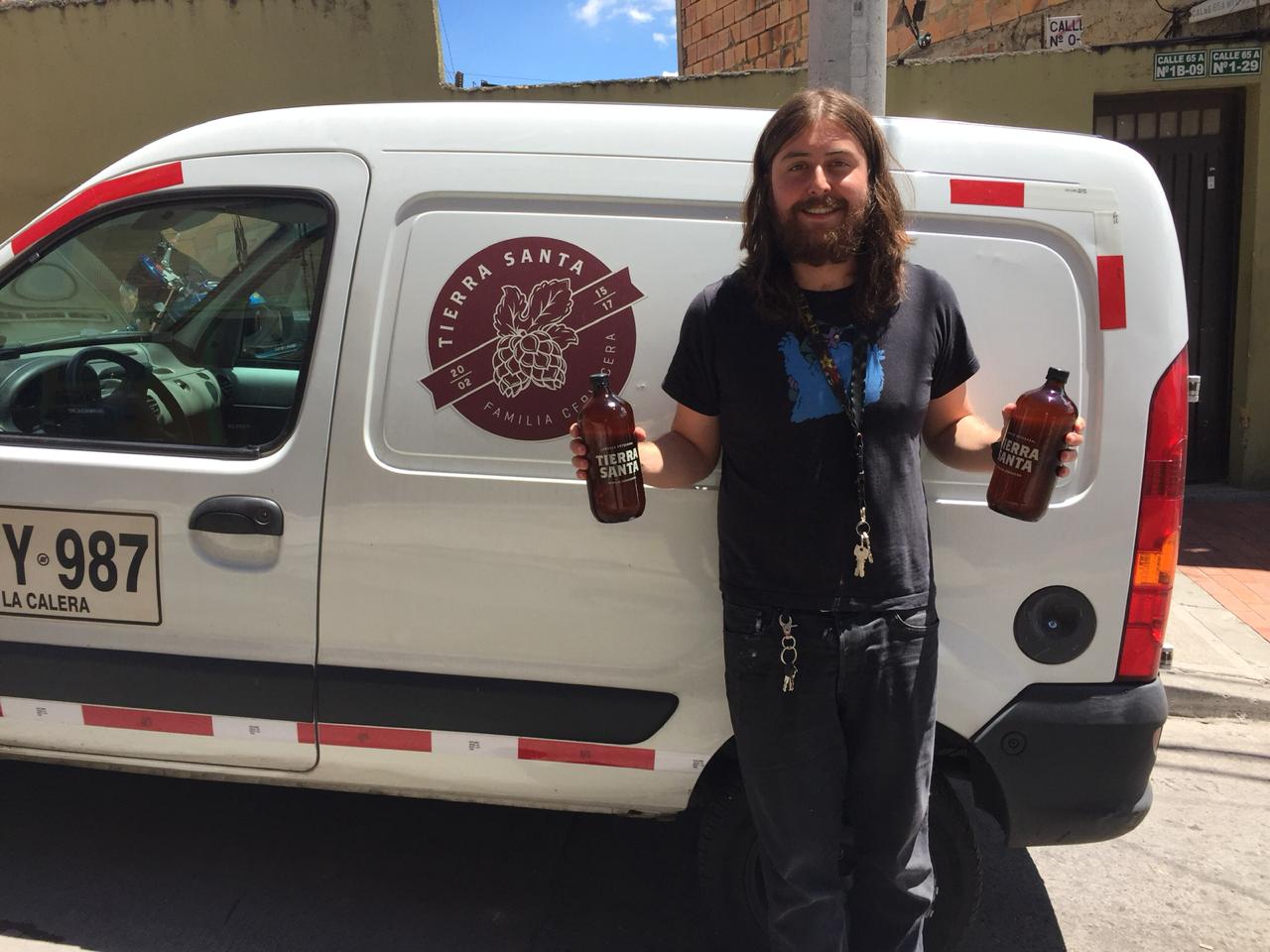Our regular roundup of COVID-19 cases in Colombia.

Key points on coronavirus in Colombia:
- 35 deaths and 1,485 cases across 26 departments
- Face masks now obligatory on public transport
- Talk (but no promises) of ‘smart quarantine’ after current lockdown ends
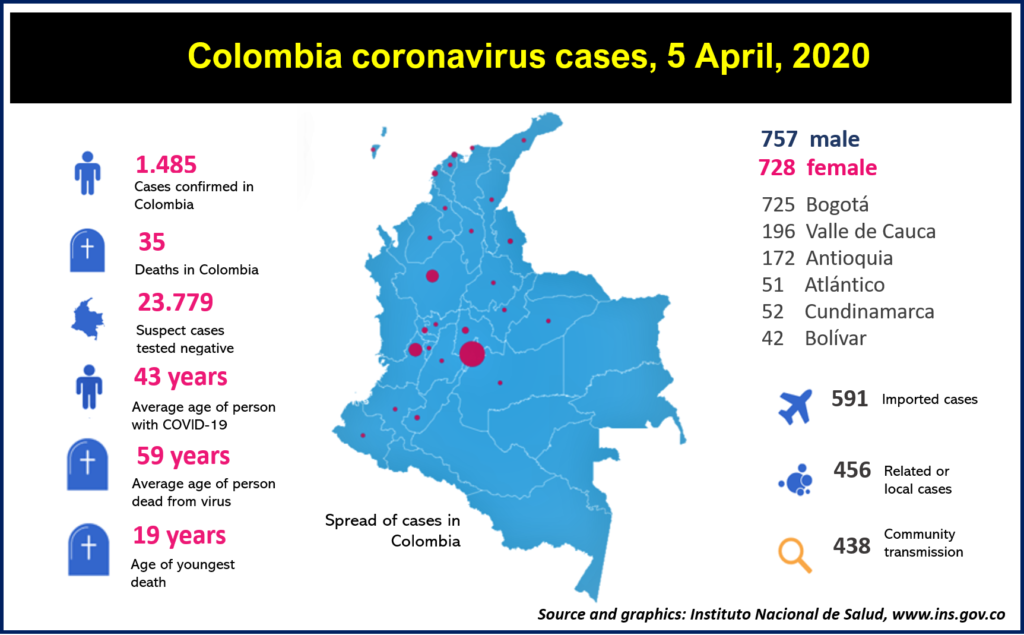
We are now one month since the first case (March 6) and latest stats show:
- 88 COVID-19 patients recovered (average age 42 years)
- 1,167 patients are sick but still at home (average age 40 years)
- 35 persons confirmed to have the virus have have died (average age 60)
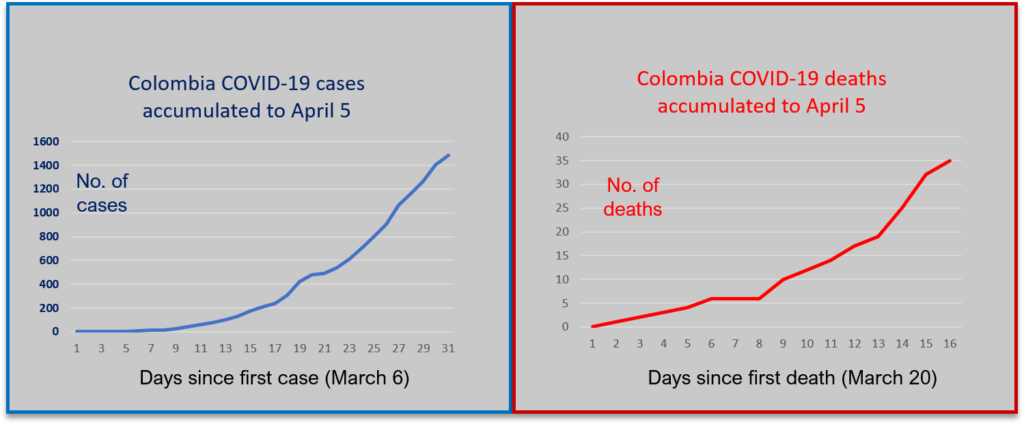
Hospitalised cases are 195, which represents about 14% of currently affected patients. Of these 63 people (4.5%) are in the ‘UCI’ intensive care units, these are high-risk or severely affected patients.
Read all our coverage of COVID-19 in Colombia
This proportion of COVID-19 hospitalisation in Colombia reflects WHO global clinical findings from other countries that “most patients with COVID-19 develop only mild illness, approximately 14% develop severe disease that requires hospitalisation and oxygen support, and 5% require admission to an intensive care unit.”
Capital increase
Coronavirus has spread to 26 departments, including Isla San Andrés, but the capital Bogotá remains the major hot-spot and accounts for almost half of all confirmed cases: That’s to say the city has close to the same number as the rest of Colombia combined, with new infections rising faster.
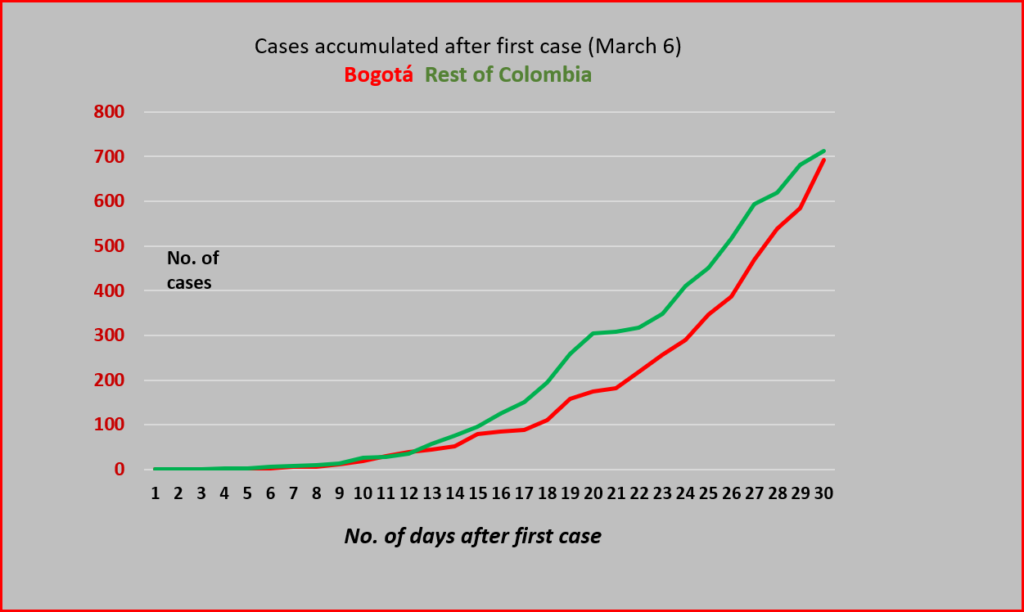
There could be several factors to this: The larger and denser population, its role as a transport hub and the cooler weather (which can facilitate transmissions, according to recent scientific reports). There is also likely to be a testing bias towards Bogotá, with more labs based here (INS, District Health).
Time to tapaboca
As we covered in the last update, there’s been a global change of tack over face masks, and from today in Colombia people using public transport systems – buses, taxis, TransMilenios etc, – will have to use tapabocas or face a stiff fine.
According to new presidential decrees, the face masks will be mandatory in “areas where there is a massive influx of people such as market places, supermarkets, banks, pharmacies, where it is not possible to maintain a minimum distance of 1 metre.” Don’t say we didn’t warn you.
Remember you can make your own cloth face covering if there are none to buy.
Testing times
How is COVID-19 testing in Colombia? In several updates we’ve talked about the importance of testing, and the problems faced in Colombia with faulty machinery, tests samples not surviving transfer to Bogotá for analysis, or patients never getting their test results back.
The latest news is that health authorities are rolling out COVID-19 testing to 60 labs with more decentralised sites. Health authorities recently announced collaboration with South Korea. Details are scarce, but according to some media reports “a plane will be sent” to Seoul to collect a large quantity of test materials as part of a plan to increase testing capacity to 17,000 a day.
Bogotá Quarantine: life in Usaquén
In the month since the first confirmed coronavirus case in Colombia, the INS reports having done 23,000 tests, an average rate of 760 per day, though in the last week this has increased to 1,700 per day, with some lab teams working in shifts to process samples 24 hours.
Look east to ease the lockdown?
In the previous update we looked at what happens next after the current national three-week quarantine ends on April 13.
Colombia’s health minister has already given some hints: the “accordion strategy” of squeezing and releasing movement restrictions according to how the outbreak is going, i.e. follow the science.
Today President Duque talked about “smart isolation” similar to used in Asian countries like South Korea and Singapore which rely on mass testing, rapid contact tracing, and selected isolation of contacts of positive cases. If successfully adopted in Colombia – perhaps a big “if” – this could mean easing of the blanket quarantine we have at present.
Duque suggested that the vulnerable and elderly will continue to be kept inside and that schools and colleges will stay shut.
The final decision – which will surely come just before April 13 – depends on advice from Colombian health experts based on how the outbreak is progressing over the next week. So for now, keep watching the curve.

